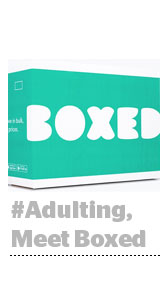
Sometimes it’s a good thing to put your customers in a box.
Boxed, a four-year-old ecommerce startup focused on bulk buying, wanted to make its customer acquisition efforts smarter.
Boxed customers buy in bulk for very different reasons. Some are busy working parents, while others are urban millennials without a car.
Boxed’s new CMO, Jackson Jeyanayagam, wanted to be able to speak to potential customers based on what they cared about, whether that’s Boxed’s ability to predict when a customer needs to reorder or its access to bulk goods for 20-somethings looking for an online Costco replacement.
In his first few months at Boxed, Jeyanayagam hired Kantar Group to survey and identify potential customers. But Boxed made the research firm operate at startup speed, turning around a report in three months when such studies can take up to a year.
“Because we are an ecommerce startup, we pushed Kantar to make the [segmentation] actionable and something we could implement,” Jeyanayagam said. “That meant being able to tag the segments in the CRM, put it into the ad creative and track the segments as new customers came in.”
In October, armed with segments like, “#Adulting,” featuring young consumers transitioning into adulthood, and “The Joneses,” featuring highly social working couples, Boxed tested its first campaign across display, its mobile affiliate partners and Facebook – where it also scaled by using lookalikes.
Boxed also customizes its ad messaging to match each segment’s varied interests. Tech-savvy people receive ads about Boxed’s AI-driven smart stock-up feature, while people who like to try new products receive messages about new products.
Early results are promising. Boxed is measuring success based on customer acquisition costs, average order value and long-term value. Customer acquisition costs went down and order value went up, Jeyanayagam said. But it will take more time before Boxed can measure long-term value.
Overall, using segments based on behaviors work better than traditional demographic targeting. “Eighteen-to-34-year-olds are so different,” Jeyanayagam said. “It’s more accurate to understand someone’s life stage.”
Two millennial moms, one a 22-year-old in Iowa and one a 36-year-old in New York, will have more in common than their differing demographics suggest, he said.
Next year, Boxed will continue to put its segments to work and will move beyond test budgets. It is also passing the segment information into its CRM to better understand the customer journey. And it’s already sharing this unique information with its CPG partners, who commit marketing spend to Boxed.
Brands like P&G, Nestle and Mondelez often segment based on third-party research, Jeyanayagam said. In contrast, “ours is purchase data.”
They love overlaying data with us,” he said, “and it’s a good opportunity for us to provide them with actionable data they can use to prioritize their marketing with us and what products they bring into market with us.”
This post was syndicated from Ad Exchanger.

More Stories
Daily Wire Welcomes Perplexity to Advertise on The Ben Shapiro Show
Here’s the Roundup for the Week Ending March 7
Aflac’s Dan Amos Reveals How He’s Successfully Held Onto the CEO’s Job for 35 Years